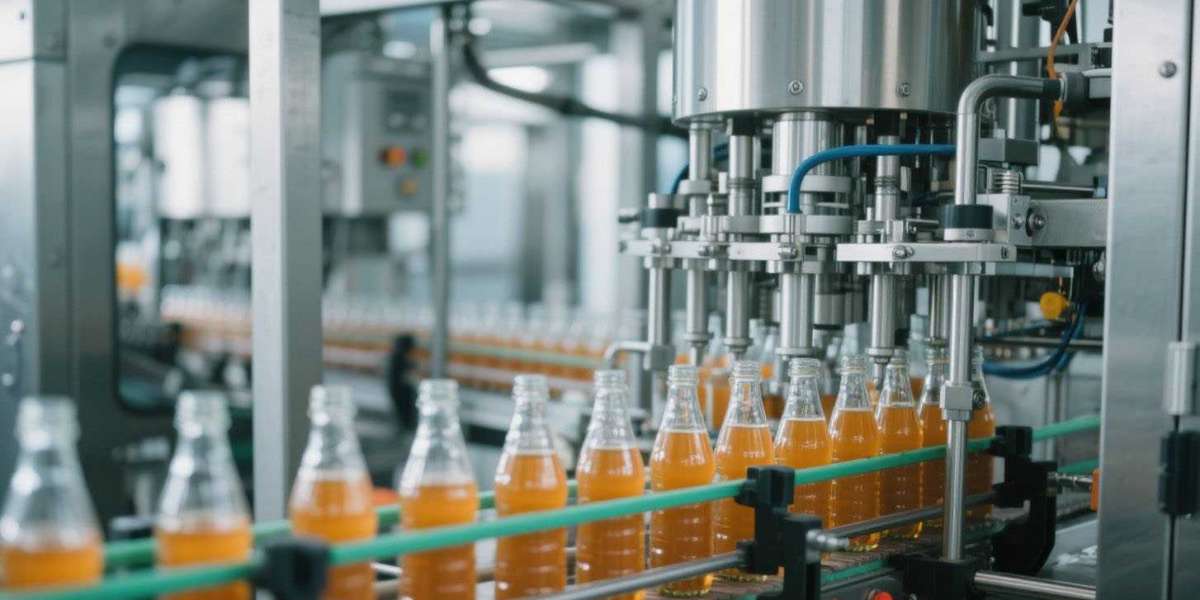For businesses in industries like beverages, cosmetics, or pharmaceuticals, selecting a bottle filling machine is more than a production decision—it’s a strategic investment that directly impacts cash flow and long-term profitability. The goal? Find a solution that delivers fast returns without straining your budget. Drawing insights from MIC Machinery’s advanced bottle filling solutions, this guide breaks down key factors to prioritize, from upfront costs to operational efficiency, to ensure your machine becomes a driver of ROI, not a financial burden.
1. Match Machine Type to Your Production Scale
Align Capacity with Volume to Avoid Waste
Choosing the right machine starts with understanding your output needs:
- High-Volume Producers (10,000+ Bottles/Day):
Opt for fully automated systems like MIC Machinery’s Fully Automatic Bottle Filling Machine (1,800–6,000 bottles/hour). While priced between 20,000–80,000, these machines slash labor costs by 70% and reduce overfill waste to less than 0.5% thanks to precision nozzles. A leading beverage brand achieved a 14-month ROI by scaling production and eliminating $15,000 in annual waste.
- Mid-Sized Operations (1,000–10,000 Bottles/Day):
The Semi Automatic Bottle Filling Machine (5–25 bottles/min) balances affordability (5,000–15,000) with flexibility. Ideal for SMEs, it allows easy adjustment for different bottle sizes and liquids. A craft distillery using this model saved $8,000/year in labor while maintaining batch customization, hitting ROI in just 22 months.
- Startups Small Batches (1,000 Bottles/Day):
Begin with manual fillers (1,000–5,000) to preserve cash flow during testing phases. These compact machines let you validate market demand before committing to larger investments—critical for startups needing to protect working capital.
Material Container Specialization
Not all machines work for all materials:
- PET Bottles: Use dedicated PET Filling Machines with pressure-sensitive technology to prevent deformation. MIC’s model reduces reject rates by 90% compared to generic fillers, saving businesses up to $10,000 annually in waste costs.
- Glass Bottles: Fragile containers require gentle handling. MIC’s Glass Bottle Filling Machine features anti-shock conveyors, cutting breakage costs by $12,000/year for a winery client—shortening their payback period to 16 months.
2. Prioritize Efficiency for Faster Cash Flow Recovery
Energy Maintenance: The Silent ROI Boosters
- Energy-Efficient Technology:
Machines with variable frequency drives (standard in MIC’s automatic models) consume 20% less electricity than older models. For a 2-shift operation, this translates to 3,000–5,000 in annual savings—equivalent to 30% of the machine’s initial cost over five years.
- Predictive Maintenance Systems:
PLC-controlled machines (like MIC’s fully automatic lines) monitor performance in real time, reducing unplanned downtime by 50%. A food manufacturer using this feature cut maintenance costs by $18,000/year, accelerating their ROI by 8 months.
Modular Design for Scalable Growth
Choose machines that adapt as your business grows. MIC’s fillers support add-on modules for capping, labeling, or sorting, letting you invest incrementally. A juice brand started with a basic filling unit, then added a capping module after one year, saving $15,000 in upfront costs while meeting rising demand.
3. Cash Flow-Friendly Financing Options
Lease vs. Buy: Optimize Capital Allocation
- Leasing for Flexibility:
Opt for 24–36 month leases on high-end machines (e.g., 2,500/month for a 75,000 automatic filler). This keeps upfront costs low, frees capital for other expenses, and often includes tax deductions that reduce effective costs by 25%.
- Rent-to-Own Trials:
Suppliers like MIC Machinery offer pilot programs: pay a 10% deposit, then monthly installments with an option to buy after testing. This de-risks investment by letting you verify performance (e.g., fill accuracy, speed) before full commitment.
Government Incentives Tax Breaks
Maximize savings through regional programs:
- EU Eco-Design Rebates: Get 15% back on CE-certified machines like MIC’s energy-efficient models.
- S. Section 179 Deduction: Deduct up to 1.05 million in equipment costs immediately, saving up to 30% in taxes for a 30,000 filler.
4. Mitigate Risks to Protect Your Investment
Supplier Reliability is Non-Negotiable
- Warranty Support:
MIC Machinery’s 2-year warranty and 24/7 technical support ensure quick issue resolution. A brewery avoided $8,000 in downtime losses during a pump failure thanks to their rapid response—an intangible benefit that directly impacts ROI.
- Spare Parts Accessibility:
Local warehouses mean 3–5 day delivery for replacements, versus 2–4 weeks for overseas suppliers. This minimizes production delays and keeps maintenance costs predictable.
New vs. Used: The Hidden Costs of Cheap Bargains
While used machines may cost 50% less upfront, they often come with hidden risks:
- Worn seals or outdated electronics can increase maintenance costs by 60%.
- Non-compliance with current safety standards may lead to fines or recalls.
Always insist on on-site testing (MIC offers free trials) to validate accuracy (e.g., ±0.5ml for pharmaceuticals) and durability before purchasing.
5. Calculate ROI in 3 Simple Steps
Use this formula to quantify your investment’s potential:
- Annual Savings: Labor, energy, and waste reductions (e.g., $15,000/year).
- Additional Revenue: Increased capacity or premium pricing from better quality (e.g., $20,000/year).
- Annual Costs: Maintenance, financing, and upgrades (e.g., $3,000/year).
ROI Formula:
\text{ROI} = \frac{(\text{Annual Savings} + \text{Additional Revenue} - \text{Annual Costs})}{\text{Initial Investment}} \times 100\%
Example with MIC’s PET Filling Machine ($50,000):
- (15,000 + 20,000 - 3,000) ÷ 50,000 = 64% ROI
- Payback Period: 1.5 years
Conclusion: Turn Your Machine into a Profit Engine
A high-ROI bottle filling machine balances immediate cash flow needs with long-term efficiency. Here’s how to prioritize:
- Startups: Use manual/semi-auto machines to test markets without heavy upfront costs.
- Growing Businesses: Invest in modular, energy-efficient models (like MIC’s semi-automatic line) to scale gradually.
- Enterprises: Lease fully automatic systems to preserve capital while leveraging speed and precision.
By choosing a solution from MIC Machinery—backed by proven technology, flexible financing, and global support—you can transform equipment selection from a costly expense into a strategic asset. Contact their team today to design a custom ROI plan that fits your business goals.








